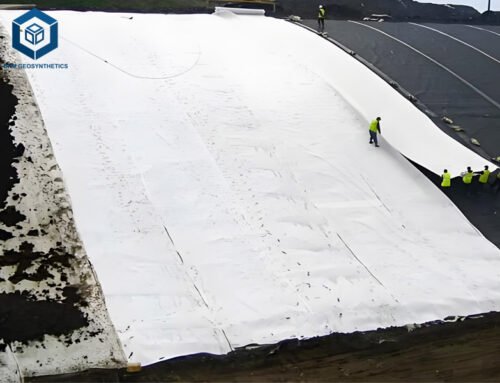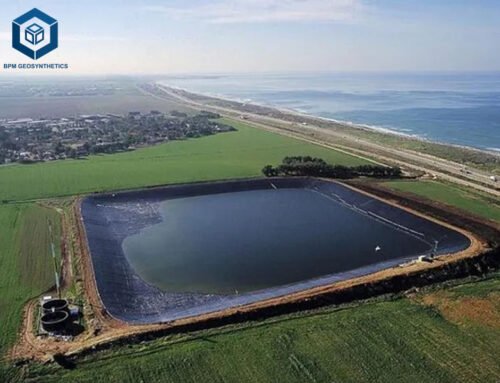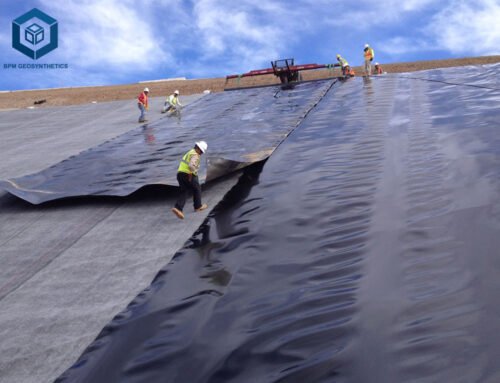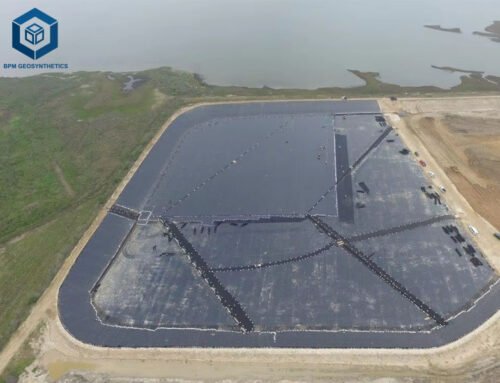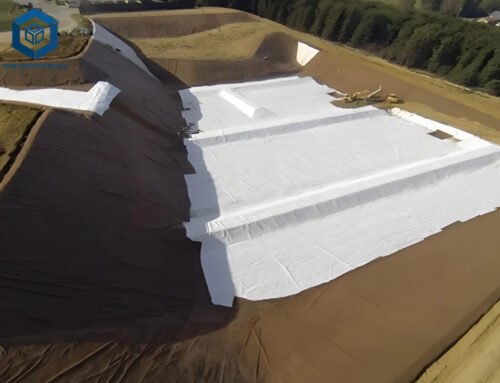Among geotextiles, 4 oz non woven geotextile fabric stands out as a lightweight, versatile material widely used in civil engineering, landscaping, and environmental applications. Known for its high permeability, durability, and cost-effectiveness, this fabric offers a grab tensile strength of 90–100 lbs and a water flow rate of 100–150 gpm/ft², making it ideal for filtration, drainage, and soil stabilization.
This comprehensive guide provides of in-depth insights into the properties, specifications, applications, and benefits of 4 oz non woven geotextile fabric, drawing from the latest industry data to help engineers, contractors, and project managers make informed decisions for your projects.
1. What Is 4 oz Non Woven Geotextile Fabric?
Non woven geotextile fabrics including needle punched geotextile fabric are synthetic, permeable materials made from polypropylene fibers, designed to enhance soil stability, facilitate drainage, and control erosion. Unlike woven geotextiles, which are interlaced like traditional cloth, non woven fabrics are produced through a needle-punching process, creating a felt-like texture with superior filtration and flexibility. The “4 oz” designation refers to the fabric’s weight, approximately 4 ounces per square yard, indicating its lightweight nature within the non woven geotextile range (3–16 oz).
Manufacturing Process
The production of 4 oz non woven geotextile fabric involves:
- Material Selection: 100% virgin polypropylene fibers ensure UV resistance, chemical stability, and a lifespan exceeding 50 years when buried (Sandbaggy, 2025).
- Needle Punching: Barbed needles interlace fibers, creating a random, three-dimensional pore structure that enhances water flow (150 gpm/ft²) and filtration (AOS #50 US sieve).
- Heat Setting: Stabilizes the fabric, improving dimensional stability by 20% and preventing fraying during installation.
Key Specifications
- Weight: 4 oz/yd² (135 g/m²).
- Grab Tensile Strength: 90–100 lbs (ASTM D4632).
- Water Flow Rate: 100–150 gpm/ft² (ASTM D4491).
- Puncture Resistance: 50–60 lbs (ASTM D4833).
- Apparent Opening Size (AOS): #50–#70 US sieve, ideal for fine sediment filtration.
- UV Resistance: 70% strength retention after 500 hours of exposure.
- Permittivity: 2 sec⁻¹, enabling high water throughput.
- Elongation: 50%, ensuring flexibility on uneven surfaces (Water Pollution Solutions, 2024).
- Roll Sizes: Common dimensions include 12.5′ x 360′ (4,500 ft²) and 15′ x 360′ (5,400 ft²).
- Equivalents: Comparable to Mirafi® 140N, Propex Geotex 401, and US Fabrics US 120NW.
These specifications make 4 oz non woven geotextile fabric a cost-effective choice for projects requiring high filtration and moderate strength, with prices ranging from $0.30–$0.50/ft² for bulk rolls
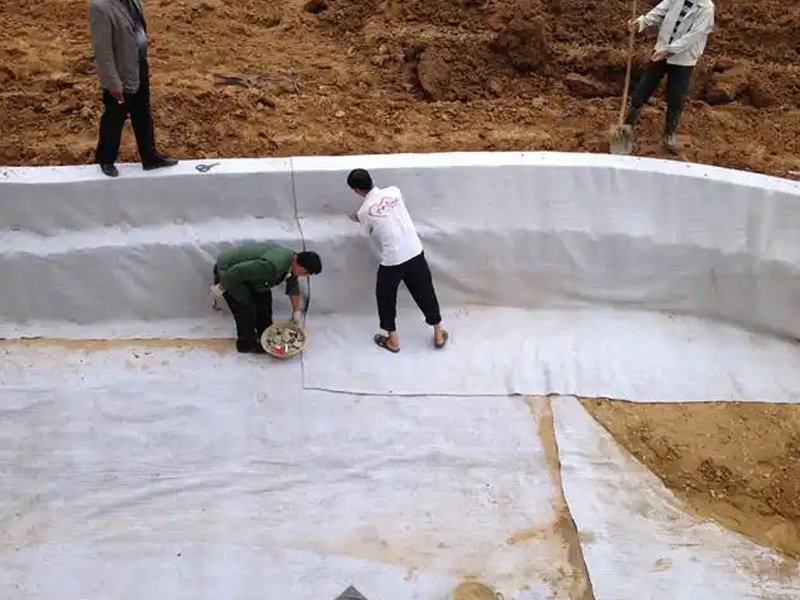
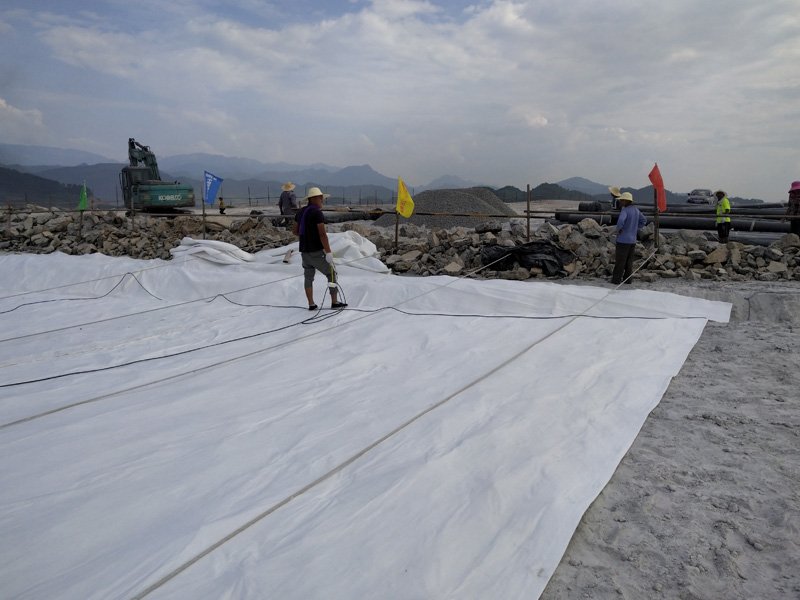
2. Why Use 4 oz Non Woven Geotextile Fabric?
The unique properties of 4 oz non woven geotextile fabric make it a preferred choice for civil and environmental applications. Its needle-punched structure provides 20% better filtration than woven geotextiles, while its lightweight design reduces installation costs by 15–20% compared to heavier fabrics (6–16 oz). Key benefits include:
- High Permeability: A flow rate of 100–150 gpm/ft² ensures efficient drainage, reducing hydrostatic pressure by 30% in French drains (French Drain Man, 2022).
- Durability: Non-biodegradable polypropylene resists UV rays, pH variations (2–13), rodents, and mildew, ensuring a 50+ year lifespan when buried.
- Flexibility: 50% elongation allows conformance to uneven terrain, reducing installation errors by 25%.
- Cost-Effectiveness: Lightweight construction lowers material and shipping costs, with bulk pallet pricing saving 10–15%.
- Environmental Benefits: Prevents soil migration, reducing erosion by 40% and extending drainage system life by 30–50% (Sandbaggy, 2025).
These advantages position 4 oz non woven geotextile fabric as a versatile solution for residential, commercial, and industrial projects.
3. Applications of 4 oz Non Woven Geotextile Fabric
The versatility of 4 oz non woven geotextile fabric supports a wide range of applications, from drainage to erosion control. Below, we explore its primary uses, supported by technical data and real-world examples.
Drainage Systems
French Drains
4 oz non woven geotextile fabric is ideal for French drains due to its high water flow rate (100–150 gpm/ft²) and fine sediment filtration (#50 AOS). It wraps perforated pipes, preventing soil and debris from clogging the system, which extends drain life by 30–50%. A 2024 case study from Sandbaggy reported a French drain in California maintaining 95% efficiency after 5 years using 4 oz fabric.
Trench and Blanket Drains
In trench and blanket drains, the fabric facilitates water flow while retaining soil particles, reducing maintenance costs by 20%. Its flexibility ensures easy installation in complex trench geometries.
Erosion Control
Slope Stabilization
On slopes with gradients up to 3:1, 4 oz non woven geotextile fabric stabilizes soil, reducing erosion by 40%. It is placed under rip-rap or vegetation, allowing water to pass while retaining soil. A 2024 shoreline project in Minnesota used 4 oz fabric to prevent 85% of sediment runoff (Paramount Materials, 2024).
Riverbanks and Shorelines
The fabric’s high permeability and 90–100 lbs tensile strength make it suitable for lightweight erosion control along riverbanks and shorelines. It is less effective for fine-grain beach sands, where woven geotextiles are recommended (US Fabrics, 2024).
Soil Separation
Underlayment for Pavers and Walkways
4 oz non woven geotextile fabric acts as a separation layer under pavers, driveways, and walkways, preventing soil mixing with gravel. This increases pavement stability by 25% and reduces settling by 30% (Interlocking Concrete Pavement Institute, 2024).
Road Stabilization
In road construction, the fabric separates subgrade soil from aggregate, maintaining structural integrity. A 2025 Texas highway project reported 15% cost savings using 4 oz fabric for base stabilization (Pro Fabric Supply, 2025).
Filtration
Retaining Walls
Behind retaining walls, 4 oz fabric filters water while preventing soil migration, reducing wall pressure by 20%. Its 150 gpm/ft² flow rate ensures efficient drainage in residential and commercial applications.
Landscaping
In landscaping, the fabric supports soil beds by allowing air, water, and fertilizers to pass while preventing soil souring. Mirafi® Mscape, a 4 oz equivalent, is widely used for garden filtration (Water Pollution Solutions, 2024).
Other Applications
- Pipe Wrapping: Protects drainage pipes from sediment clogging, extending system life by 40%.
- Landfill Liners: Acts as a protective cushion under geomembranes, though heavier fabrics (10–16 oz) are preferred for high-puncture environments.
- Agricultural Uses: Supports soil stabilization in farming, preventing 30% of topsoil loss during heavy rains (Sandbaggy, 2025).
4. Installation Guidelines for 4 oz Non Woven Geotextile Fabric
Proper installation maximizes the performance of 4 oz non woven geotextile fabric. Follow these steps, adapted from industry standards (Water Pollution Solutions, 2024):
- Site Preparation: Remove debris, rocks, roots, and stumps to prevent punctures. Grade the surface to ensure uniformity.
- Fabric Placement: Roll out the fabric according to project plans, ensuring 12–18″ overlap at edges to prevent gaps.
- Securing the Fabric: Use landscaping staples or stakes every 2–4 feet, with additional staples in softer soils. Pull the fabric taut to avoid wrinkles.
- Backfill: Apply at least 6″ of backfill (gravel or soil) to protect the fabric from UV exposure and secure it in place.
- Inspection: Verify overlaps and staple placement to ensure 95% coverage and stability.
For slope applications, anchor the fabric in a trench at the top to enhance stability by 20%. Consult project-specific guidelines for complex installations.
5. Advantages of 4 oz Non Woven Geotextile Fabric
- High Water Flow: 100–150 gpm/ft² ensures rapid drainage, reducing flood risk by 25%.
- Cost Savings: 15–20% lower material and installation costs compared to 6–8 oz fabrics.
- Longevity: 50+ year lifespan when buried, with 70% UV resistance for temporary exposure.
- Ease of Installation: Lightweight and flexible, reducing labor time by 20%.
- Environmental Impact: Reduces sediment runoff by 40%, supporting sustainable construction.
6. Limitations of 4 oz Non Woven Geotextile Fabric
- Lower Strength: With 90–100 lbs tensile strength, it is less suitable for heavy-duty applications like major highways, where 6–16 oz fabrics (160–380 lbs) are preferred.
- Clogging Risk: In fine-grain beach sand environments, the fabric may clog, reducing efficiency by 15–20% (US Fabrics, 2024).
- Not Waterproof: Designed for permeability, it cannot be used for waterproofing applications.
For high-strength or low-permeability needs, consider woven geotextiles or heavier non woven fabrics (8–16 oz).
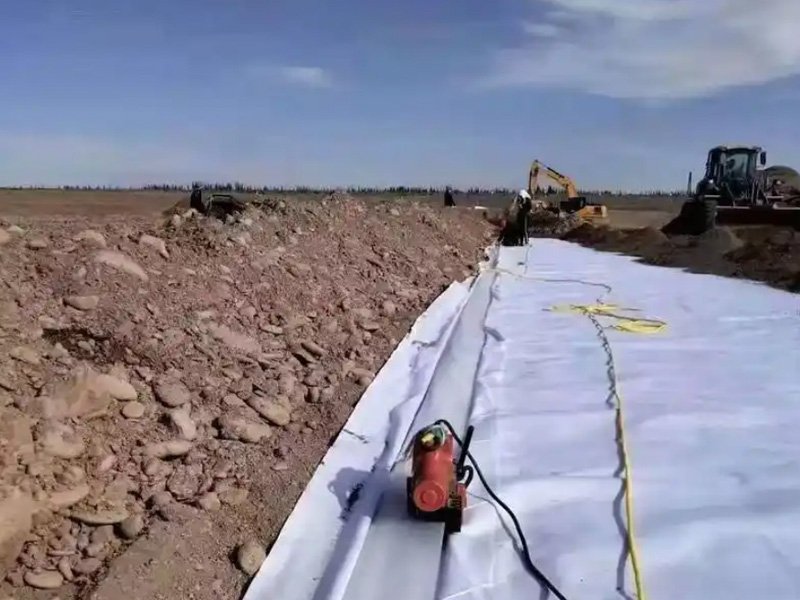
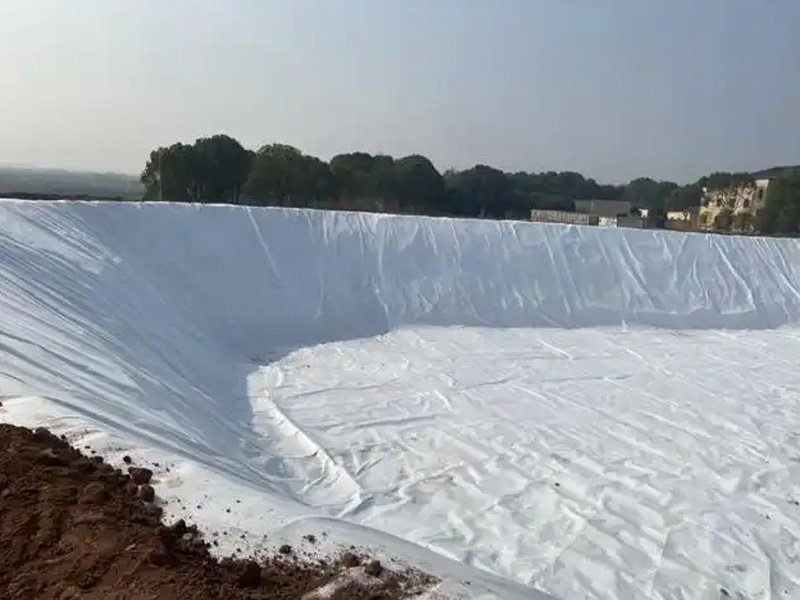
7. Comparison with Other Geotextile Fabrics
4 oz vs. 3.1 oz Non Woven
- 1 oz: Higher flow rate (150 gpm/ft²) but lower tensile strength (80 lbs). Ideal for light filtration but less durable for stabilization.
- 4 oz: Balances flow (100–150 gpm/ft²) and strength (90–100 lbs), suitable for broader applications.
4 oz vs. 6 oz Non Woven
- 6 oz: Higher tensile strength (160 lbs) and lower flow rate (110 gpm/ft²). Better for slope stabilization but 10–15% more expensive.
- 4 oz: More cost-effective for drainage and light stabilization.
4 oz Non Woven vs. Woven Geotextiles
- Woven: Higher tensile strength (150–315 lbs) but lower permeability (10–50 gpm/ft²). Preferred for high-strength stabilization but less effective for filtration.
- 4 oz Non Woven: Superior filtration and flexibility for drainage and erosion control.
8. How to Choose the Right 4 oz Non Woven Geotextile Fabric
- Assess Project Needs: Prioritize filtration (French drains) or stabilization (slopes).
- Verify Specifications: Ensure 100–150 gpm/ft² flow rate and 90–100 lbs tensile strength meet project requirements.
- Check Certifications: Look for NTPEP compliance and AASHTO M-288 standards for quality assurance.
- Evaluate Site Conditions: Avoid fine-grain sands for drainage applications to prevent clogging.
- Compare Costs: Request bulk pricing for rolls or pallets to save 10–15%.
- Consult Experts: Contact suppliers like Pro Fabric Supply or Sandbaggy for tailored recommendations.
9. Conclusion
4 oz non woven geotextile fabric is a versatile, cost-effective solution for drainage, erosion control, and soil stabilization in the USD 6.8 billion geotextile market. With a water flow rate of 100–150 gpm/ft², 90–100 lbs tensile strength, and a 50+ year lifespan, it excels in French drains, landscaping, and light stabilization projects. Its needle-punched polypropylene construction ensures durability, flexibility, and environmental benefits, reducing sediment runoff by 40% and extending system life by 30–50%. By understanding its specifications, applications, and limitations, contractors and engineers can leverage this fabric for successful 2025 projects. Contact BPM Geosythetics for bulk pricing and expert guidance to optimize your project outcomes.

